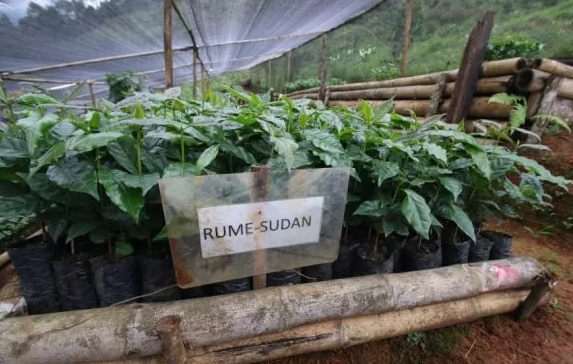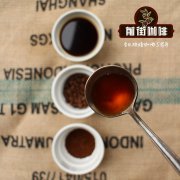How did the Sultan of Lumi, an ancient coffee variety that is little known, come into the public eye?

Rume Sudan was discovered in the Rume Valley Valley of the Boma Plateau Plateau near the Ethiopian border in southeastern South Sudan in 1940. Code name RS-510, known to the coffee industry, is basically a wild coffee variety, native to tropical African forests in the Marsabit Mountains, characterized by brass leaves.
Until 2015, the bean of Lumi Sudan received attention as the participating bean of the WBC champion Sasa.
The coffee variety of Lumi Sudan rarely appears in the eyes of the public. although it has strong disease resistance, due to its low yield, it is rarely planted on a large scale and is basically used for variety research and development. to increase the taste of coffee and improve disease resistance.

Sultan Lumi is also known to the coffee world by the code name RS-510, with brass leaves as its main feature. When breeders need to create new varieties of coffee, RS-510 is the best Arabica provenance. For example, varieties with high yield and poor flavor can usually get varieties with good flavor and good yield when mixed with RS-510, because the flavor of RS-510 is extremely amazing, but the disease resistance is common and the yield is very low.
Mixing RS-510 with higher-yielding varieties allows coffee farmers to have new hybrids that are high-yielding, disease-resistant and drinkable, using techniques developed by many well-known modern varieties such as Castillo, Centroamericano, or Colombia.
Important Notice :
前街咖啡 FrontStreet Coffee has moved to new addredd:
FrontStreet Coffee Address: 315,Donghua East Road,GuangZhou
Tel:020 38364473
- Prev

Description of taste and flavor characteristics of rum bucket washed Castillo coffee beans in San Jose Manor, Colombia
Colombian Caldas San Jose Manor rum barrel washing Origin: Caldas Chateau San Jose varieties: Castillo treatment: rum barrel washing altitude: 1750 meters flavor: rum, cantaloupe, grape, honey, chocolate San Jose Manor (Finca San Jose) is located in the Colombian province of Caldas, 1750 meters above sea level. Mons, the hostess of the manor
- Next

The Cockfighting Manor in Tolima, Colombia introduces what kind of coffee Xizao is.
Columbia Tolima producing area: Tolima Manor: cockfighting Manor: 1800 meters above sea level: Bourbon Sidra claw treatment method: washing flavor description: jasmine, pomelo, orange, citrus, maple syrup sweet cockfighting manor area is remote, in the environment without the network, the usual entertainment of local residents is cockfighting, so the manor is when
Related
- Detailed explanation of Jadeite planting Land in Panamanian Jadeite Manor introduction to the grading system of Jadeite competitive bidding, Red bid, Green bid and Rose Summer
- Story of Coffee planting in Brenka region of Costa Rica Stonehenge Manor anaerobic heavy honey treatment of flavor mouth
- What's on the barrel of Blue Mountain Coffee beans?
- Can American coffee also pull flowers? How to use hot American style to pull out a good-looking pattern?
- Can you make a cold extract with coffee beans? What is the right proportion for cold-extracted coffee formula?
- Indonesian PWN Gold Mandrine Coffee Origin Features Flavor How to Chong? Mandolin coffee is American.
- A brief introduction to the flavor characteristics of Brazilian yellow bourbon coffee beans
- What is the effect of different water quality on the flavor of cold-extracted coffee? What kind of water is best for brewing coffee?
- Why do you think of Rose Summer whenever you mention Panamanian coffee?
- Introduction to the characteristics of authentic blue mountain coffee bean producing areas? What is the CIB Coffee Authority in Jamaica?

